Let’s face it: The 2020 season was not college football’s finest. There were empty or partial crowds, no tailgating and no atmosphere. In the run-up to the season, all of the sport’s cracks and flaws — the lack of centralized leadership, the outdated model for treatment of athletes, even the limitations of a four-team playoff without proper representation — all shined brightly. The season still produced great moments (and, in Alabama, maybe the greatest team of all time), but it was also even more frustrating and exhausting than usual.
Perhaps because of that frustration, however, it feels like the sun is shining a little brighter this offseason, the optimism a little thicker in the air. Crowds will return to the stands, smoked meats will return to the parking lots and we get to once again enjoy a proper college football season.
There is far more to a season than its national title race — the journey is as important as the destination. But it’s still nice to be able to set the table in a format that allows us to discuss lots of teams and cover lots of ground.
This is my annual Ifs List piece — an attempt to see just how many “ifs” it takes me to turn a team into a genuine national title contender. Below are the 19 teams with national title odds better than +10000 per Caesars Sportsbook by William Hill, sorted by the number of “ifs” required. The top of the list features names extremely familiar to the title race, but there is quite a bit of new blood below that.
(As always, we’re not going to worry about obstacles like injuries, which could strike any team at any time. Those concerns are obvious for everyone.)
Jump to a team: Alabama | Clemson | Ohio State | Georgia
Oklahoma | Texas A&M | Texas | Iowa State | North Carolina
Florida | Notre Dame | Oregon | USC | LSU | Miami
Wisconsin | Penn State | Oklahoma State | Iowa
Two ifs
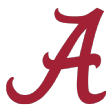
Alabama Crimson Tide (+220 national title odds)
If … Bryce Young is ready. Nick Saban fielded his best team, and one of the best in history, in 2020. Now he deals with the amount of turnover we’ve come to expect from great Bama teams. The offense alone had to replace playcaller Steve Sarkisian, three of the Heisman top five (receiver DeVonta Smith, quarterback Mac Jones, running back Najee Harris), Outland winner Alex Leatherwood, Rimington Trophy winner Landon Dickerson and No. 6 draft pick Jaylen Waddle.
And yet, Alabama is the likely preseason No. 1 team. Saban replaced Sarkisian with former NFL head coach Bill O’Brien. He has senior Brian Robinson Jr. and any of four young blue-chippers at running back, future All-American John Metchie at wideout, the diverse and exciting Jahleel Billingsley at tight end and a line still loaded with veterans. And as Jones’ replacement, he has Young, the top QB prospect in the 2020 signing class.
There’s almost no question that Young will thrive, but he will have to be good almost immediately. Alabama plays three opponents projected in the SP+ top 15, all away from home and all in the first half of the season: Miami (Sept. 4), Florida (Sept. 18) and Texas A&M (Oct. 9).
If … one young receiver breaks through. Alabama’s defense rounded into form last season and finished sixth in defensive SP+, and now 16 of the 19 players with 100-plus snaps return. This should be the best Bama defense in a few seasons, which is good because last year’s offense has almost no choice but to regress at least a bit. But if the receiving corps gets quick reinforcements, the drop should be minimal.
Metchie, Billingsley and steady slot man Slade Bolden are a good starting point, but between Ohio State transfer Jameson Williams, 2020 backups like Xavier Williams and incoming star freshmen like Jacorey Brooks and Agiye Hall, at least one more star needs to emerge.
Three ifs

Clemson Tigers (+425)
If … D.J. Uiagalelei and his receivers are ready. As a freshman, Uiagalelei started midseason games against Boston College and Notre Dame because of Trevor Lawrence‘s positive COVID-19 test, and he went 59-for-85 for 781 yards, four TDs and no picks. He took few sacks and made safe, solid decisions while also serving as a 250-pound short-yardage back.
Now comes the hard part: delivering that high level when defenses are ready for you and, in this case, doing so with a new receiving corps. Last year’s top three Tigers receivers (Amari Rodgers, Cornell Powell, and do-it-all RB Travis Etienne) are all gone. There’s a chance that Justyn Ross could return after retiring due to injury problems in 2020, but it’s not yet a given. Clemson’s receiving corps boasts plenty of recent star recruits — juniors Frank Ladson Jr. and Joe Ngata, sophomore E.J. Williams, etc. — but quite a few players will need to raise their respective games in 2021.
If … Lyn-J Dixon is a worthy security blanket. Etienne was the ultimate bail-out option in 2020, averaging 125 rushing and receiving yards per game and averaging 12.3 yards per catch on passes with average air yardage of 0.2 yards. Dixon has waited his turn and will have to fend off all-world freshman Will Shipley for carries, among others. As efficient as he is, Etienne’s hands and explosiveness made him almost impossible to replace.
If … a young cornerback breaks through. Despite 18 freshmen and sophomores recording 100-plus snaps, Brent Venables’ Tigers defense ranked eighth in defensive SP+ last season. Now they could reap the benefits of that experience. Sophomores Bryan Bresee and Myles Murphy will lead a terrifying line, but Clemson’s CFP loss to Ohio State showed the secondary could use a bit more upside, especially with leading CB Derion Kendrick transferring to Georgia. Might a recent star recruit like sophomore Fred Davis II or freshman Nathaniel Wiggins be ready for a high-level breakthrough?
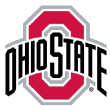
Ohio State Buckeyes (+600)
If … [insert QB battle royal winner] is ready. It’s a common theme: While more FBS teams than normal return their starting QBs in 2021, last year’s four CFP teams don’t.
Just like Alabama and Clemson, Ohio State has its choice of blue-chippers for replacing star Justin Fields. C.J. Stroud (No. 2 pocket passer in the 2020 recruiting class) appeared to be the top dog in spring ball, yet Kyle McCord (No. 5 in 2021) and Jack Miller III (No. 14 in 2020) weren’t far behind. Whoever wins the job will likely play at a high level, but how quickly? With a trip to Minnesota and a visit from Oregon in the first two weeks, the Buckeyes could be vulnerable if their QB play is less than immediately excellent.
If … Kerry Coombs adjusts. Like many first-year coordinators, Coombs struggled with all of the covid uncertainty and less in-person prep time in 2020. He deployed quite a bit of soft zone coverage, either because his personnel couldn’t play the tight man coverage Ohio State is accustomed to or because he just didn’t want to. Either way, five of eight opponents posted a passer rating over 145. (No opponents topped 140 in 2019.)
Corners Sevyn Banks and Marcus Williamson are back, and youngsters Ryan Watts and Lejond Cavazos (plus a couple of star freshmen) could play roles. Coombs spoke of more aggression this spring, but Ohio State’s coverage needs to be both more aggressive and better.
If … the pass rush hits fifth gear again. The Ohio State pass rush was still good in 2020 — the Buckeyes ranked fifth in pressure rate, and the top three ends (Jonathon Cooper, Tyreke Smith and Zach Harrison) were credited with 37 forced incompletions and interceptions. But they ranked just 66th in actual sack rate and 79th in havoc rate (TFLs, passes defensed and forced fumbles per play). Smith and Harrison are back, and the latest star recruit, Jack Sawyer, is on the way. Time to dominate again.
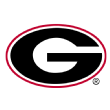
Georgia Bulldogs (+800)
If … late-year JT Daniels is full-year JT Daniels. Georgia’s potential is obvious. Kirby Smart has built a recruiting juggernaut, and the Bulldogs have finished in the AP top seven for four years running. Plus, late in 2020, we might have caught a glimpse of a bright offensive future.
After missing most of the season returning from a knee injury, former the USC blue-chipper Daniels erupted in the last four games, completing 67% of his passes at 15.4 yards per completion. His opponent-adjusted 89.1 Total QBR would have ranked fourth in FBS over an entire season. It led me to declare both Daniels as 2021’s Mac Jones and Georgia as 2021’s Clemson.
The RB corps is overflowing with talent, and the line is good. All Daniels has to do is live up to that small sample — except that doesn’t always happen.
If … the receivers handle a change in weight class. The Dawgs still have more pass-catching talent than most. Kearis Jackson and Jermaine Burton caught 63 balls for 918 yards in 2020, and LSU transfer Arik Gilbert and Darnell Washington create one of the most highly touted and physically terrifying tight end duos ever. But No. 1 wideout George Pickens tore his ACL in spring ball. It’s unclear if and when he’ll be available, and everyone else will have to carry more responsibility than expected.
If … a renovated secondary holds up. The Dawgs ranked first in defensive SP+ in both 2019 and 2020. A loaded linebacking corps saw some attrition, but the only genuine concern is in the secondary, where six of last year’s top eight players depart. That said, safeties Lewis Cine and Christopher Smith return, and playmaking safety Tykee Smith joins from West Virginia.
Smart brought in Clemson’s Derion Kendrick, and veteran Ameer Speed might be ready for a shot. Blue-chip youngsters like Kelee Ringo, Jalen Kimber and Nyland Green will be called into action too, for better or worse.

Oklahoma Sooners (+850)
If … Rhamondre Stevenson was replaceable. After upset losses to Kansas State and Iowa State and numerous glitches in a scruffy overtime win over Texas, Lincoln Riley’s Sooners were in an uncertain place midway through 2020. But they outscored their last six opponents by an average of 28 points per game and outgained them by 2.5 yards per play.
Running back Rhamondre Stevenson and defensive end Ronnie Perkins were big reasons for this surge. Suspended for the first five games of the season, each did his best to make up for lost time.
Star quarterback Spencer Rattler, three of his top receivers and a senior-heavy line return for the Sooners offense. In the backfield, Kennedy Brooks returns after a 2020 opt-out, sophomore Marcus Major lit up Florida in the Sugar Bowl and Tennessee transfer Eric Gray is experienced. But Stevenson averaged 7.4 yards per touch (rush or reception). Does the backfield have a player who can approximate that level of damage?
If … Perkins was also replaceable. In his six games, Perkins recorded 5.5 sacks with a 16.3% pressure rate, second-best in the country among linemen with 170-plus pass-rush attempts. OU allowed 34 points per game against FBS teams without him and 18 with him. Coordinator Alex Grinch’s vision of extreme havoc and disruption is rounding into form, but a new playmaker — blue-chip freshman Clayton Smith, perhaps? — must come up big.
If … a remodeled secondary remains nasty. OU allowed just a 106.1 passer rating over its final eight games. The pass rush helped, but six OU DBs defensed (intercepted or broke up) at least four passes. Three of those — corner Tre Brown and safeties Tre Norwood and Brendan Radley-Hiles — have departed after combining for six INTs and 12 breakups.
Safeties Pat Fields and Delarrin Turner-Yell are back, and sophomore corner Woodi Washington is a future star. But depth was a strength last season. Is that still the case?
Four ifs
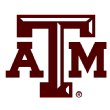
Texas A&M Aggies (+2800)
If … either Haynes King or Zach Calzada is ready. Three-year starting QB Kellen Mond departed for the Minnesota Vikings after ranking between 26th and 28th in Total QBR each year from 2018 to 2020 — he was always good, but never quite one of FBS’ best. The reins will likely go to either the sophomore Calzada or redshirt freshman King. Calzada had one of the better arms of the 2019 recruiting class, though King is particularly tantalizing: a former top-50 recruit who combines a blue-chip arm with 4.5 speed.
Whoever wins the job will get a breaking-in period — A&M should be a double-digit favorite in each of its first five games before an Oct. 9 visit from Alabama.
If … the Aggies avoid predictability. The Aggies were a patented “run on run downs, pass on pass downs” offense last season, and they didn’t use many of the bells and whistles that have become staples for top offenses — motion, play action, RPO action, etc. Adding a few more modern touches and throwing more on early downs could do major favors for a young QB.
If … a remodeled offensive line breaks in quickly. Physicality was A&M’s biggest strength last season, and while the defensive line returns almost everyone and adds otherworldly freshman tackle Shemar Turner, the offensive line is a question mark. Isaiah Spiller, speedster Devon Achane and dual-threat Ainias Smith give A&M one of the scariest RB rooms in the country, but while All-American guard Kenyon Green returns, the other four starters do not.
If … the pass defense improves. Mike Elko’s defense jumped to 13th in defensive SP+ last year, but the secondary still lacked a bit: A&M allowed a 63% completion rate (84th in FBS) from a pretty soft zone and gave up 2.9 passes per game of 20-plus yards (44th). Although virtually every defensive back returns and the pass rush should be good again, this unit needs some sharpening.

Texas Longhorns (+3000)
If … the secondary takes a big step forward. Texas is now on its third head coach — former Alabama offensive coordinator Steve Sarkisian — since Mack Brown’s (temporary) retirement. The Longhorns have a few rungs to climb before they can legitimately think about titles. If new DBs coach Terry Joseph can make something of the secondary, the outlook brightens quickly. UT was 97th in Total QBR allowed in 2020, with injuries and constant shuffling, especially at safety, creating ample breakdowns. Veterans like B.J. Foster still have time to leap forward, but it’s hard to assume it’ll happen.
If … the pass rush shows up. A shaky secondary is done no favors by a nonexistent pass rush. Texas ranked 115th in sack rate and 87th in pressure rate in 2020, and the only player with more than two sacks is gone. New coordinator Pete Kwiatkowski came from sack-happy Washington, and Sarkisian brought in four linebackers via the transfer portal. Instant, significant change is required.
If … small samples are accurate ones. Believing in the UT offense requires faith in small sample sizes. The last time we saw Casey Thompson, he was completing 8 of 10 passes for 170 yards and four touchdowns in a bowl romp over Colorado. The Horns’ new starting QB, be it Thompson or blue-chip redshirt freshman Hudson Card, will have another small-sample all-star in RB Bijan Robinson next to him (24 touches for 443 yards in his last two games), but he’ll have to carry a receiving corps replacing three of last year’s top four targets.
If … the offense line starts to look like Bama’s. The Horns ranked eighth in offensive SP+ in 2020, so there aren’t tons of concerns, but they did still rank 70th in stuff rate (run stops at or behind the line) and 65th in sack rate. New OL coach Kyle Flood, who made the Tuscaloosa-to-Austin trip with Sarkisian, has to quickly sharpen up this experienced unit.
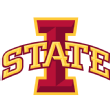
Iowa State Cyclones (+3500)
If … Brock Purdy can improve one more time. If a team with middling recruiting rankings is ever going to win a national title, the recipe will include an incredible diamond-in-the-rough quarterback, at least one All-American-level skill player, at least one wildly-good pass rusher and an experienced lineup from top to bottom.
Check (Purdy), check (Breece Hall), check (Will McDonald) and check (fourth in February’s returning production rankings) for Matt Campbell’s Cyclones in 2021. After finishing in the AP top 10 for the first time last fall, they have the players to do so again.
If ISU is to find a national title gear, though, it will require a further leap from Purdy, who finished 15th in Total QBR. His growing rapport with wide receiver Xavier Hutchinson — who needs to torch every opponent like he did Oklahoma (13 catches for 197 yards in two games) — could be key in that regard.
If … the big-play count increases. Purdy is a safe, quick passer, but despite occasional magic from Hall, ISU’s explosive play rate (rushes of 12-plus yards, passes of 16-plus) was just 10.9%, 95th in FBS. Hutchinson and Sean Shaw Jr., the leading returning wideouts, caught just five of 17 passes thrown 20-plus yards downfield. Going deep just slightly better would open up a world of possibility.
If … the opponent’s big-play count decreases. ISU ranked 33rd in havoc rate and fifth among defensive backs only. Corner Tayvonn Kyle and nickel Isheem Young are particularly deft risk-takers, but risk wasn’t always rewarded; the Cyclones allowed an explosive play rate of 11.9%, 60th in FBS and higher than the ISU offense. A lot has to go right if they’re allowing more big plays than they make.
If … there’s a second pass rusher on the roster. In McDonald, Jon Heacock’s defense has one of the best pure pass-rushers in the country. Last year, the Cyclones had two of them: McDonald and Joshua Bailey. With McDonald likely getting extra blocking attention, another option must emerge, be it a senior like Zach Petersen or Eyioma Uwazurike or a high-potential blitzer.
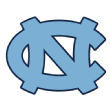
North Carolina Tar Heels (+3500)
If … the run game holds up. Mack Brown’s Tar Heels jumped from 30th to 12th in SP+ last season, and a lot of the key reasons for that leap are back — namely quarterback Sam Howell, all five offensive linemen and nine defensive starters.
The skill corps, however, is rebuilding. UNC must replace RBs Javonte Williams and Michael Carter and WRs Dyami Brown and Dazz Newsome (combined: 4,761 yards from scrimmage); and while a few of last year’s reserve receivers produced when given the chance, the running back situation is murky. Williams and Carter averaged 7.6 yards per carry, but returnees (and Tennessee transfer Ty Chandler) averaged 4.5. Will the new run game have enough pop to keep Howell & Co. on schedule? Will Howell, a willing runner, take on too much of the load?
If … what we saw from last year’s backup WRs was sustainable. Emery Simmons, Khafre Brown, Beau Corrales and Josh Downs gained 895 yards at 11.5 per target. Will they reproduce those rates with a few more reps against opponents’ top corners?
If … an upgraded secondary allows far fewer gashes. After leaping from 95th to 44th in defensive SP+ in Jay Bateman’s first season, the Heels settled back in at 53rd last season. One problem: An all-or-nothing secondary gave up a few too many “alls.”
Nine of last year’s top 10 DBs return, and a couple of sophomores could be game-changers. Ace corner Storm Duck returns after missing most of 2020 with injury, and blue-chipper Tony Grimes, who reclassified from the 2021 class to 2020 last summer, should be ready for a larger role.
If … the run defense stiffens. Pass defense is of increasing importance, but ranking 95th in rushing success rate will still backfire. In Tomon Fox, Tomari Fox and Raymond Vohasek, the Heels have some of the more disruptive edge players in the league, but they need a little more push up front.
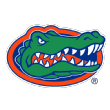
Florida Gators (+4000)
If … a historically great receiving corps only regresses a little. With tight end Kyle Pitts, slot man Kadarius Toney and wideout Trevon Grimes, Florida had one of the best and most diverse receiving corps in the country. The trio did damage from everywhere on the field, and they’re all off to the NFL. Plenty of former star recruits — including wideout Jacob Copeland, slot Xzavier Henderson and TE Keon Zipperer — could thrive in starring roles. There’s no way to avoid regression after last year’s production, but how can the Gators limit it?
If … the wait for Emory Jones was worth it. In parts of two seasons, Jones has served as Kyle Trask‘s backup and an occasional change of pace; Jones threw 70 passes while rushing 74 times for 473 yards. Jones is a talent head coach Dan Mullen can work with. Is he ready to maintain the Gators’ ridiculous 2020 rates (39.8 points per game, 7.3 yards per play)?
If … a roughed-up and remodeled defensive line holds up. The Gators allowed 185 combined points in their four losses and gave up 600-plus yards three times. They rushed the passer pretty well and stiffened in the red zone, but situational prowess isn’t as important as down-for-down competence, and Florida lacked that, especially against the run. Three of the four teams that vanquished the Gators had a 170-yard rusher. Elite lines could push them around, and that was before they lost three of their top four defensive tackles. They have to improve up front while breaking in new players.
If … turnover in the secondary is a good thing. Florida’s pass defense wasn’t awful, but it wasn’t good enough, and without star corner Marco Wilson and last year’s top three safeties, coordinator Todd Grantham has some holes to fill. There aren’t quite as many former star recruits in the pipeline at DB as at other positions — unless freshman corner Jason Marshall is ready to star from day one.
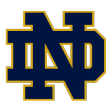
Notre Dame Fighting Irish (+4000)
If … Ian Book‘s shoes aren’t too big to fill. Notre Dame’s three-year starting QB never reached a Trevor Lawrence-ish or Joe Burrow-ish level, but Book steadily improved, took the Irish to two CFPs and finished 2020 ninth in Total QBR. Can either Wisconsin transfer Jack Coan or redshirt freshman Drew Pyne hit that level? Coan did rank ninth in Total QBR in 2019, albeit in a run-heavy system, so the potential is there. High-level QB play is an obvious must.
If … at least one big-play wideout emerges. Despite solid efficiency, the Irish lacked in the big-play department. They averaged 1.9 gains per game of 30-plus yards — 70th in FBS — and the two most likely chunk-play generators, wide receivers Javon McKinley and Ben Skowronek, are gone. The RB corps has some pop, but the receiving corps needs to play its part. Can a veteran like Avery Davis or Joe Wilkins Jr. or newcomers such as Lorenzo Styles Jr. or Deion Colzie create some explosions?
If … a brand-new offensive line still shines. It has been quite a while since Notre Dame didn’t have a strong offensive line, but it’s hard to overlook the fact that the Irish have to replace two All-Americans and two more all-ACC picks. Bringing in Marshall All-American Cain Madden was a lovely move; however, this is still a lot of turnover.
If … the pass rush is great despite turnover. Not only does new defensive coordinator Marcus Freeman have to find replacements for three starters in the front seven, they were the three most disruptive starters: ends Daelin Hayes and Adetokunbo Ogundeji and OLB Jeremiah Owusu-Koramoah. Youngsters like Jack Kiser and Isaiah Foskey were productive in smaller samples; will that translate to a star turn? The run defense should be excellent again. But with a merely good, not great, secondary, the Irish will need a fierce pass rush to make stops against elite offenses.

Oregon Ducks (+4000)
If … Tim DeRuyter brings the havoc. Per SP+, Andy Avalos turned a top-50 defense into a top-20 unit in his two years as Oregon defensive coordinator. Avalos is now Boise State’s head coach, and Mario Cristobal handed the reins to the veteran DeRuyter.
DeRuyter is historically at his best when he can blitz effectively. Oregon ranked just 102nd in havoc rate last season, and while havoc isn’t a necessity for good defense, disruption helps immensely. DeRuyter has all-world end Kayvon Thibodeaux and a high-upside LB corps at his disposal. Time to attack.
If … the non-Thibodeaux defensive line raises its game. Thibodeaux might be as good against the run as the pass, but he couldn’t stop Oregon from ranking 90th in rushing success rate allowed. Now, he’ll have new starters next to him up front. This isn’t a very big line; one way or another, Oregon’s run defense has to improve.
If … Anthony Brown takes the leap (or Ty Thompson does it for him). In four years at first Boston College then Oregon, Brown’s Total QBR has gone from 55.6 to 62.9 to 72.7 to 88.8. Granted, last year’s dual-threat production — 65% completion rate, 71% rushing success rate — came from a sample of just two games and 38 snaps. But 18 of the past 20 playoff teams have seen their quarterback post a QBR of at least 80. Is Brown that guy? Will Thompson, a top-70 freshman, be ready to surpass him?
If … Joe Moorhead unearths some more big plays. Moorhead’s brief first season as the Ducks’ OC was decent — they improved from 23rd to 17th in offensive SP+ — although they averaged only 5.0 rushes of 10-plus yards per game (69th in FBS) and 3.1 passes of 20-plus (60th). WR Devon Williams and RB Travis Dye have big-play potential, but they need a few more of them in 2021.
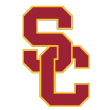
USC Trojans (+4000)
If … Kedon Slovis adjusts to adjustments. Outstanding in 2019, USC’s quarterback dealt with a bit of a sophomore slump last fall. Opponents came up with some adjustments for Graham Harrell’s air raid-ish attack and made life more frustrating for Slovis.
Slovis in 2019: 72% completion rate, 12.4 yards per completion, 2.3% interception rate, 81.1 Total QBR.
In 2020: 67% completion rate, 10.9 yards per completion, 2.7% interception rate, 75.7 Total QBR.
Slovis had to settle for shorter passes and battle impatience. His top two receivers are gone, but angry-running junior Drake London and sophomore Bru McCoy are back, and Memphis’ Tahj Washington and Colorado’s K.D. Nixon arrive via the transfer portal. Slovis has a chance to dominate again.
If … third downs are friendlier. In open-play situations — snaps between their 10 and their opponent’s 30 — the Trojans averaged 6.5 yards to go on third downs (18th in FBS) but produced only a 36.1% success rate (96th). For obvious reasons, that must change.
If … recent recruiting pays off in the front seven. In Todd Orlando’s first season as defensive coordinator, USC improved from 60th to 29th in defensive SP+. Tackling was an issue, however — the Trojans were 118th in tackle success rate — and they were another “good pressure rates, bad sack rates” defense. Rush end Drake Jackson remains a missile, and recent recruiting could produce a talent upgrade. Former Alabama tackle Ishmael Sopsher and two all-world recruits — end Korey Foreman (third in the ESPN 300) and OLB Raesjon Davis (46th) — need to make an immediate impact.
If … the secondary gets nastier. Safety Talanoa Hufanga and corner Olaijah Griffin were tremendous, and while they’re two of only three starters USC must replace, their absence could loom large. Sophomore safety Max Williams is going to be dynamite. But some other less proven youngsters will crack the lineup; they have to clear a high bar and tackle well.
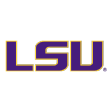
LSU Tigers (+4000)
If … small-sample Myles Brennan is large-sample Myles Brennan. LSU’s defense assured that 2020 would be disappointing for the defending national champs, but Brennan might have kept the Tigers around in a couple of more games. The then-junior looked great against Vanderbilt and Missouri (admittedly not the highest bar to clear) before suffering a season-ending injury. LSU had topped 40 points in both games but would do so just twice in the final seven contests.
Brennan is battling sophomore Max Johnson in 2021; Johnson improved late in the season but never matched Brennan’s small-sample upside. The winner of the QB job will have an almost guaranteed star in Kayshon Boutte (last three games of 2020: 27 catches, 527 yards) and solid complements in Jaray Jenkins and Koy Moore, plus every starting lineman and last year’s top two RBs. To some degree, a rebound is imminent. Can either Brennan or Johnson conjure sustained elite play?
If … the new defensive coordinator hire is infinitely more successful than the last one. In Bo Pelini’s lone year as DC, LSU fell to 69th in defensive SP+, and while there were bad breaks from an injury perspective, communication errors and questionable tactics doomed the D. Ed Orgeron replaced Pelini with Daronte Jones, a longtime NFL assistant with ties to LSU’s successful former DC, Dave Aranda. LSU returns nine defensive starters and could rebound quickly if Jones is the man for the job.
If … the defensive front finds some push. LSU ranked 110th in rushing success rate allowed in 2020; last year’s top six linemen return, but it could be necessary that a couple of blue-chip freshmen — especially 330-pounder Maason Smith — are ready to steal time from the veterans.
If … 2019 Derek Stingley Jr. is back. Stingley suffered the ultimate sophomore slump in 2020. He was barely 100 percent healthy all season, and his and the LSU secondary’s production slipped significantly. Any chance of a big LSU rebound requires a big Stingley rebound.
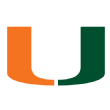
Miami Hurricanes (+6000)
If … the run game finds consistency. In its first season with up-tempo offensive coordinator Rhett Lashlee and transfer quarterback D’Eriq King, Miami improved from 81st to 33rd in offensive SP+ and scored at least 31 points in seven of 11 games. It was an impressive accomplishment considering the Hurricanes still weren’t very efficient. They went three-and-out 30% of the time (74th in FBS), and they ranked 95th in rushing success rate.
In backs Cam’Ron Harris and Donald Chaney Jr., as well as King himself, Miami has some thrilling runners, and the line returns virtually everyone. If experience creates more consistency, we could see another jump in the rankings.
If … a go-to wideout emerges. King has strong interior-passing options in slot Mike Harley and tight end Will Mallory, but outside receivers made only 29% of Miami’s catches last year (national average: 36%), and primary wideouts Mark Pope and Dee Wiggins averaged a mediocre 6.4 yards per target. Is versatile Oklahoma transfer Charleston Rambo (10.0 yards per target in 2019 and 2020) the answer?
If … the defensive end factory continues to produce. Miami’s returning production numbers are off the charts, and it’s driving the Canes’ top-10 SP+ projection. They lost two dynamite ends in Quincy Roche and Jaelan Phillips (combined: 12.5 sacks and 16 run stuffs), however.
A Manny Diaz defense never lacks for TFLs, and it’s safe to assume great new ends will emerge. Will it be senior Zach McCloud? Tennessee transfer Deandre Johnson? A freshman?
If … the run defense improves. With three sophomores in the linebacking corps and new players at tackle, Miami’s run defense regressed in 2020. The Canes made plenty of big plays but ranked only 73rd in rushing success rate allowed. They were still excellent on passing downs but didn’t force them as frequently, and Miami fell from ninth to 31st in defensive SP+. Experience isn’t an issue this time around, and those numbers need to reverse once more.
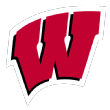
Wisconsin Badgers (+7500)
If … the running backs do their part. A 1,000-yard rusher at Wisconsin is a tradition — in the 2010s, the Badgers failed to produce one only once — but in seven games last season, they barely produced a 300-yard rusher. Blue-chip freshman Jalen Berger hits the edge with speed and showed some midseason promise, but Wisconsin finished 72nd in rushing success rate. The bread-and-butter run game was far more of a mess than we’re used to seeing.
The line should be excellent, but is Berger ready to shine? Junior Isaac Guerendo? Can Clemson transfer Chez Mellusi push for a starting spot?
If … good Graham Mertz makes more appearances. In the first and last games of his first season, the blue-chip Mertz was almost perfect: 31-for-38 passing for 378 yards, six TDs and no picks. In between: 56% completion rate, five INTs, three TDs. The receiving corps was an injury-laden mess, and the entire offense labored through coronavirus-related issues.
The receiving corps welcomes back seniors Danny Davis III and Kendric Pryor (53 catches in 2019) after injuries sidelined both for most of 2020. Still, it’s hard to read what Mertz might be capable of after such polarized performances.
If … the tackling improves. Jim Leonhard’s Badgers defense was excellent again, finishing fourth in defensive SP+. But leaks appeared: After allowing 5.3 gains per game of 15-plus yards in their first four games, they allowed 9.7 in the last three. Missed tackles were an issue: While the national average for tackle success rate is around 77%, five of Wisconsin’s 15 primary defenders were at 69% or lower, and the Badgers ranked 68th overall.
If … the pass rush gets home. Leonhard blitzes constantly, but like Ohio State, the Badgers generated solid pressure (fourth in pressure rate) without enough actual sacks (104th in sack rate). It would help immensely if young outside linebackers Nick Herbig and Aaron Witt realized their pass-rushing potential in 2021.
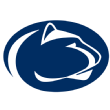
Penn State Nittany Lions (+8000)
If … Sean Clifford‘s third offensive coordinator is his best. In two seasons as starting quarterback, Clifford has posted a raw QBR over 75 eight times, including twice each against Indiana and Michigan State. PSU is 7-1 in those games, averaging 38 points. But his QBR has fallen under 40 in five games, all losses (18 PPG).
Can Mike Yurcich uncover consistency? Oklahoma State’s offensive coordinator until 2018, he bounced to Ohio State in 2019 and Texas in 2020. His past five offenses have all averaged at least 38 points per game and ranked no worse than eighth in offensive SP+, and he inherits a loaded RB room, a veteran line and a young, high-upside receiving corps. If Clifford finds another gear under Yurcich, so does Penn State.
If … potential means receiver production. Jahan Dotson exploded as PSU’s No. 1 target, and freshmen Parker Washington and KeAndre Lambert-Smith each had their moments, especially Washington. Recent star recruits such as TE Theo Johnson and WR Lonnie White Jr. (if he chooses football over baseball) give PSU upside and potential matchup advantages. This is still a young unit, but it must come up big.
If … the new offense travels. Per SP+, PSU has three projected top-20 opponents on the schedule: Wisconsin, Iowa and Ohio State. All three games are on the road, and one assumes the Nittany Lions will have to win two of three to be in CFP contention.
If … transfers stick on the defensive line. Brent Pry’s defense has ranked from 10th and 14th in defensive SP+ for four straight years. The 2020 defense generated tons of pressure but wasn’t quite sharp enough against the run. With four of last year’s top six linemen gone, two transfers — Duke tackle Derrick Tangelo and Temple end Arnold Ebiketie — must thrive like they did at their former schools. If they don’t, the line will probably be a little too freshman-heavy for PSU to be a title-caliber team despite experience elsewhere.
Five ifs
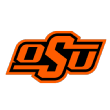
Oklahoma State Cowboys (+8000)
If … Spencer Sanders has another gear. OSU hasn’t finished in the AP top 10 since 2011; the Cowboys are clear title long shots. But their defense has surged (18th in defensive SP+ last year), and if the offense reestablishes elite credentials, they have top-10 potential.
Sanders is the key.
OSU in 2019 and 2020 when Sanders’ QBR was over 70: 5-1, 45 points per game. When it was under 50: 2-4, 24 PPG.
His potential has been obvious for two years, but he has been maddeningly inconsistent.
If … small-sample all-stars deliver all year. The offense improved late in 2020, and while it helped that the O-line finally jelled, RB Dezmon Jackson rushed for 353 yards in two games, then Dominic Richardson rushed for 169 in the next. And after catching one ball all season, Brennan Presley caught six for 118 and three scores in the bowl win over Miami.
These are the guys OSU will be relying on in 2021. Can they pull off these huge exploits for an entire season?
If … a stable line is a great line. Two of OSU’s opening-day starting linemen, Cole Birmingham and Hunter Anthony, played a combined 103 snaps before injury, and the line was a mess for weeks. They both return, as do four primary contributors and Miami (Ohio) transfer Danny Godlevske. Is this a recipe for consistent quality?
If … experience leads to more defensive upside. OSU’s defensive improvement comes from a trade coordinator Jim Knowles loves to make. The aggressive Pokes will trade occasional big plays in exchange for a steady stream of three-and-outs. They return 16 of the 20 players who recorded 150-plus snaps, and they boast one of the most physical and frustrating safety corps in the country. How much more improvement can they make?
If … the red zone is friendlier. In goal-to-go situations, OSU scored touchdowns 64% of the time (107th in FBS) and allowed them 73% of the time (46th). That has to flip significantly.

Iowa Hawkeyes (+8000)
If … Spencer Petras has a couple of extra gears. After an unlucky 0-2 start, Iowa ripped off six Big Ten wins in a row, five by at least two touchdowns, and charged to 10th in SP+. The defense was maddening to play against, and the run game, keyed by back Tyler Goodson, was strong.
The passing game? Not so much. Petras finished just 64th in Total QBR, and Iowa ranked 95th in completion rate with next to no big plays. The Hawkeyes nearly made the CFP in 2015 without elite QB play, but to actually win games once they’re in contention, they need a passing game.
If … a remodeled receiving corps creates explosions. That lack of big plays happened despite the efforts of fifth-round draft pick Ihmir Smith-Marsette, who averaged 13.8 yards per catch. Only four players with 10-plus receptions return; they averaged 10.4 yards per catch between them. Somehow, some way, Iowa needs chunk plays.
If … new tackles clear a high bar. Iowa has produced plenty of star offensive tackles through the years, and after losing Alaric Jackson and Mark Kallenberger, they’ll need a couple of more. Petras needs all the help he can get.
If … the reinforcements on the D-line are ready. The Iowa secondary is going to be phenomenal, but the front seven has to replace five starters. End Zach VanValkenburg is a star, and linebacker Jack Campbell made 12% of Iowa’s havoc plays despite missing three games. Since the offense’s ceiling is lower than most of the other contenders here, this defense can’t miss a beat.
If … the defense stops letting opponents off the hook. For such a well-rounded defense, the Hawkeyes couldn’t always get off the field. They ranked 11th in success rate on standard downs (first downs, second-and-6 or less, third-and-4 or less) but 48th on passing downs. Combined with shaky red zone defense, that created a few more touchdown opportunities than necessary.
